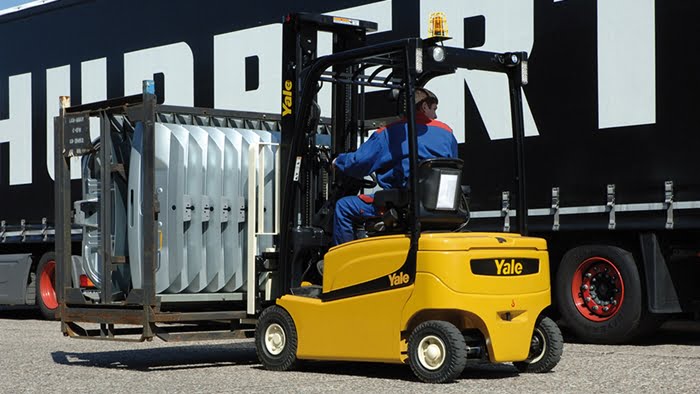Chapter 2: AC Technology Compared to Internal Combustion
When compared to internal combustion systems, the performance of AC lift trucks in parameters such as acceleration, ability to negotiate a ramp, speed control on ramps, load-lift ability and braking are today quite competitive. AC technology has demonstrated a proven ability in recent years to match the performance of IC lift trucks in these criteria, and in some cases, even surpass them.
Advantages of AC lift trucks over IC/CNG Lift Trucks
- Performance levels: productivity and cost-of-load handled that can match or exceed any IC truck available.
- Potential for greater cost savings, including lower maintenance costs over the life of the lift truck.
- Significantly lower cost of planned maintenance (estimate $550 per year/lift)[See Fig 3].
- Significantly less guaranteed downtime for scheduled maintenance (17 hours less during 5 year period).
- Flexibility for both indoor and outdoor applications.
- Enclosed motors and controllers for added protection.
- With the use of high frequency smart chargers (HFSC) and a FIFO system, the battery/lift truck requirement will drop from 3 batteries/lift truck down to 2.3 batteries/lift truck – resulting is savings of $3960/lift truck.
- Ability to utilize ELT Fleet Smart Power – power program for all lifts, resulting in:
- Additional guaranteed savings.
- Zero upfront acquisition cost of batteries.
- Zero maintenance headaches and no liability since assets are owned and maintained by ELT Fleet Management.
- Fixed 5-year cost for all lift truck power needs.
- Energy reclamation during braking.
- Zero pollution from exhaust emissions.
- Greater residual value (approximately $3500 more).
Disadvantages of AC lift trucks over IC/CNG Lift Trucks
- Need for battery handling system infrastructure and space.
- Capacity Range Bound. There are limitations to larger capacity requirements.
- Time spent changing batteries.
Read The Full Series:
Chapter 1: The Concept of Total Cost of Ownership (TCO)
Chapter 2: AC Technology Compared to Internal Combustion
Chapter 3: Compressed Natural Gas (CNG)
Chapter 4: Trends in Materials Handling
Chapter 5: Voltage Levels Used in Electric Lift trucks Today
Chapter 6: Battery and Charging Systems
Chapter 7: Electric Braking and Energy Regeneration
Chapter 8: Emissions and Corporate Responsibility: A Major Problem for IC Lift Trucks
HCO Innovations is publishing this eight-part series as an in-depth comparative analysis and discussion on Compressed Natural Gas (CNG) Internal Combustion (IC) motors and Alternating Current (AC) Eletric lift truck engines, Comparison Analysis of CNG (IC) vs. AC Electric Lift Trucks, by Will Van Ness, VP of Fleet Management at HCO Innovations.
Comparison Analysis of CNG (IC) vs. AC Electric Lift Trucks (AC)
The materials handling industry continues to evolve at a rapid pace, particularly in the area of motive power propulsion. Tremendous technological advancements have been made over the past decade to directly address the rising cost of petrol (fossil fuels) along with stricter emission standards. Today’s MHE acquirers have more choices than ever when it comes to motive power propulsion and with the success seen amongst fleets utilizing alternative fuel sources such as lithium ion (LION) and Hydrogen Fuel Cell (HFC), the choices will most likely increase as time goes on. For the purpose of this discussion document, our focus will be on comparing AC Electric (AC) to Internal Combustion powered lift trucks (IC), specifically compressed natural gas (CNG).

